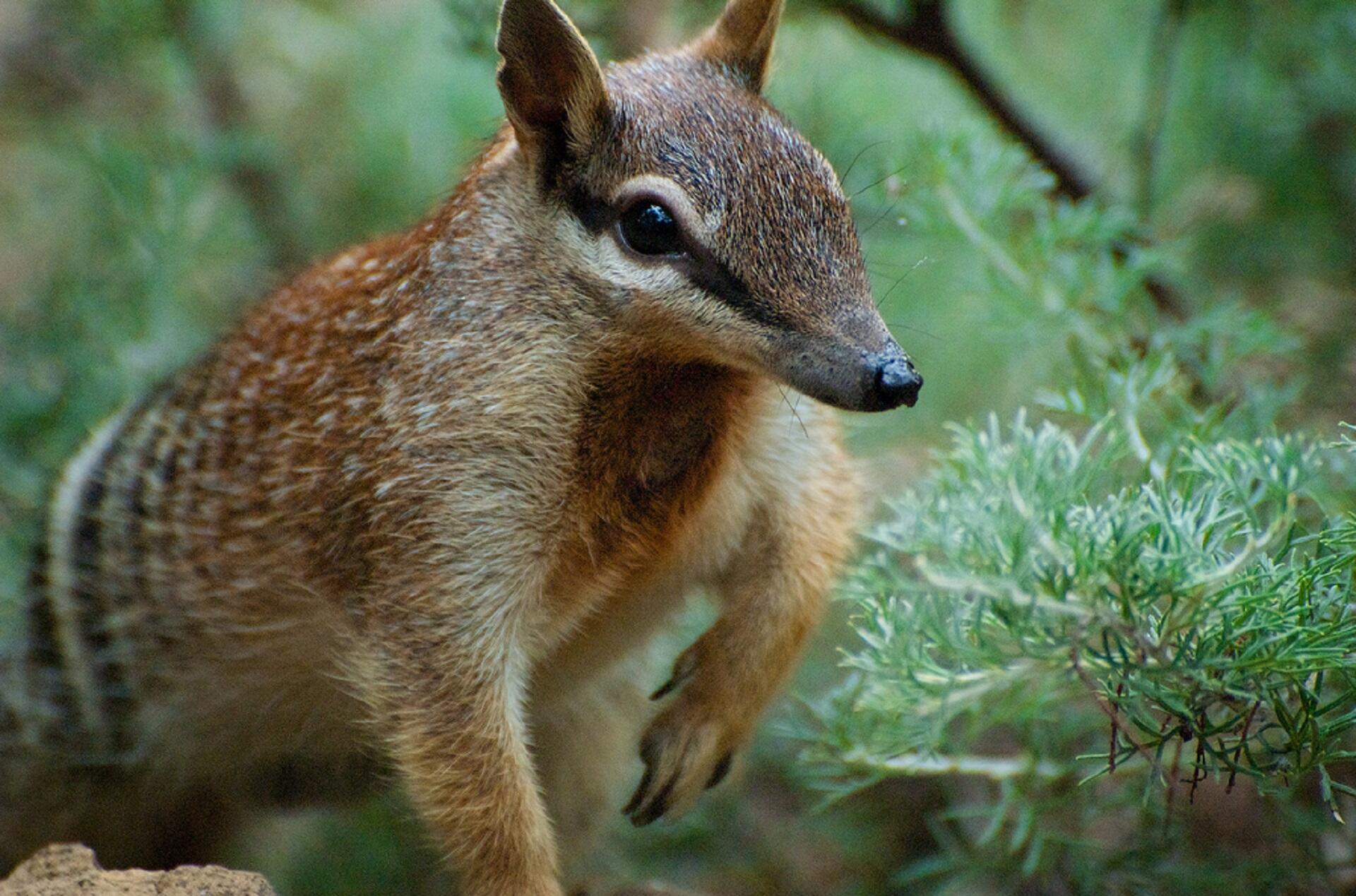Western Australia is our country's largest state, so it stands to reason that WA wildlife would be abundant. We count more than 600 bird species alone, 15 of which are native to the area. Its vast deserts and scrublands offer reptiles and insects a welcoming home. Mammals and aquatic animals expand the wildlife catalogue yet further.
| 😻 Animal | 📛 Binomial name | 📍 Only in WA? | 🔍 Characteristics |
|---|---|---|---|
| Numbat | Myrmecobius fasciatus | Yes (except for a rehomed population) | Long snout Striped fur Lazy eaters |
| Black Swan | Cygnus atratus | No | The state's official bird Black feathers with red bill Is boisterous and aggressive. |
| Whale Shark | Rhincodon typus | No | The state's offical aquatic animal Largest fish Filter-feeder |
| Gilbert's Potoroo | Potorous gilbertii | Yes | Gravely endangered Small Head shaped like rats' |
| Quokka | Setonix brachyurus | Yes | About the size of a house cat Able to climb trees Has a smiling face |
| Carpet python | Morelia spilota | No | Well suited to environment Even-tempered Has strong feed reaction |
| Greater bilby | Macrotis lagotis | Mostly | Nocturnal Omnivorous Constantly threatened |
| Perentie | Varanus giganteus | No | Large Prefer isolation Apex predators |
| Australian sea lion | Neophoca cinerea | No | Good-sized Curious nature Lives spread apart |
| Thorny devil | Moloch horridus | No | Spiny Small fearsome looking |

The Numbat
This small marsupial has distinctive markings: a pointed muzzle, a bushy tail, and stripes across its back and face. At one time, it populated large swaths of territory, from Australia's southwesternmost tip, into New South Wales (NSW). Today, its numbers and range are limited to small pockets in Western Australia's southern end.
The Tone-Perup Nature Reserve, and Dryandra Woodland National Park, are home to two small numbat populations.
Numbats are lazy eaters, preferring soft, pulpy termites to more hardy ants. They occasionally eat the latter, but their mostly useless teeth make them hard for numbats' simple digestive system to process.
We end our numbat segment with good news. Conservationists have successfully reintroduced numbats in some parts of their historic territory. We now find protective enclosures housing these animals in South Australia, as well as NSW's more arid terrains.
The Black Swan
This swan is fairly widespread, across Australia and around the world. However, it is a symbol in only two places: Western Australia, and Dawlish (in England). This elegant fowl is native to Western Australia. It is the state's bird symbol.
Swans typically mate for life; black swans too. About 6% of swan pairs are same-sex.
They engage in extra-pair paternity: pairing with a female, as though a thruple.
And then, they steal her nest once she lays her eggs.
Swans have always been important to European heraldry. When colonisers arrived, they brought their swan reverence with them. Western Australia's flag features a black swan, so does its coat of arms. For nearly 50 years (1854 - 1902), the black swan postage stamp was the only one available.
Whale Shark
This carpet shark is Western Australia's third state animal, representing the aquatic domain. It is the largest fish alive (that we know of), and the last living member of the family Rhincodontidae.
It lives in warm-water regions all over the world, in two distinct populations. Western Australia's whale sharks are members of the Indo-Pacific subpopulation, the larger of the two groups. These sharks all follow migratory patterns, likely based on rest periods and their feeding needs.
This shark is one of three that 'filter-feeds'. They have filtering organs that extract food particles from the water that passes through them.
The whale shark has teeth, but they serve no purpose in feeding. Instead, these creatures swim forward with their mouths open, letting their filtering organs do all the work. They gorge themselves during spawning season, when fish release their egg clutches.
Gilbert's Potoroo
No list of Western Australian animals would be complete without this tiny marsupial. It is the rarest in the world, and the most endangered of all mammals. This state is the only place they exist. And it's a fragile existence, at that.
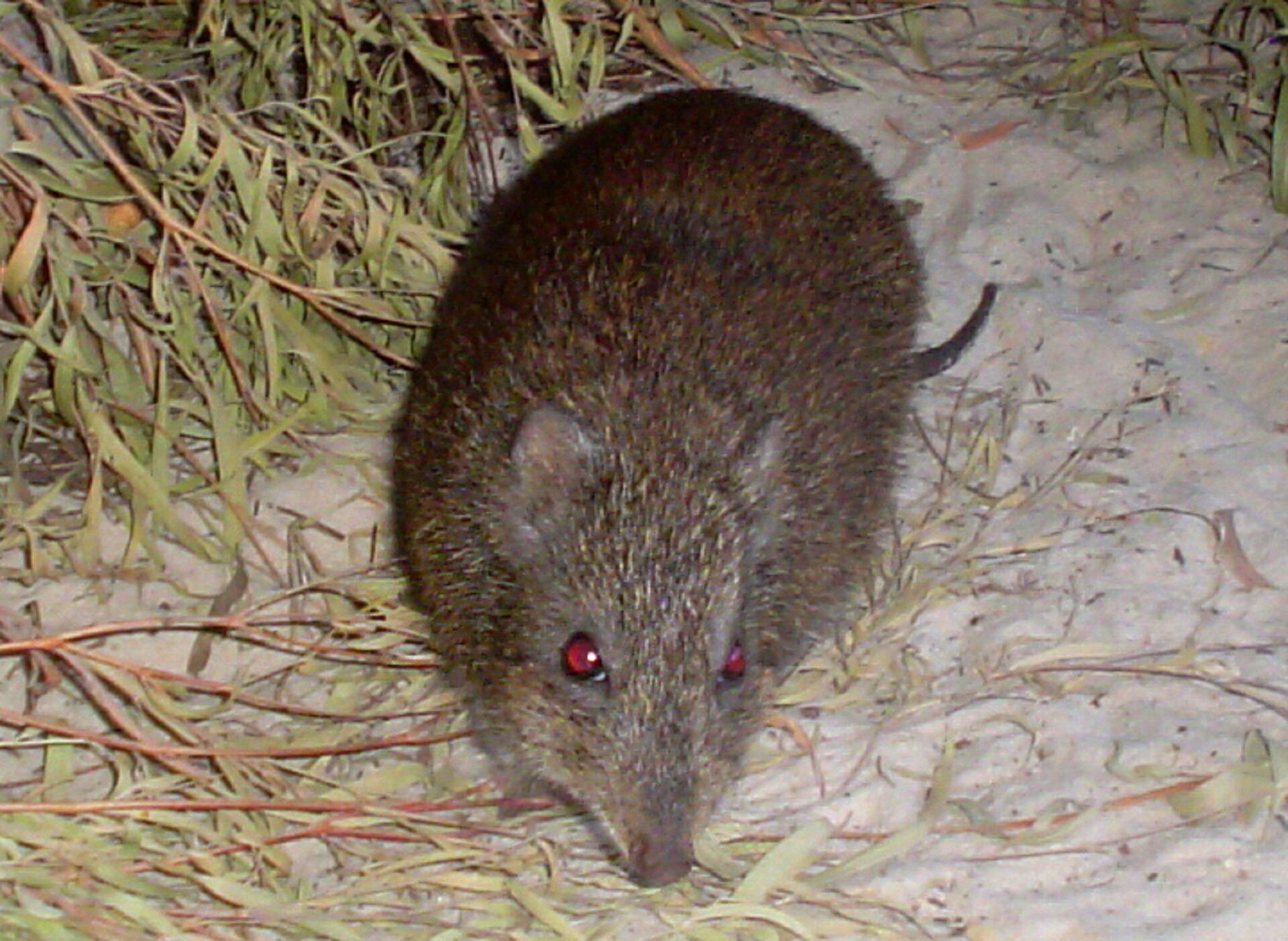
These beasts have had a tragic time of things. Once, their numbers were great, but a series of misfortunes greatly reduced their numbers. This timeline chronicles their struggles:
Early 20th Century
Potoroos thought to be extinct.
1994
Potoroos are rediscovered
2010
Conservation efforts begin
2014
Population numbers around 40 animals
2015
A bushfire consumes their habitat.
This further reduces the population
2016
Portions of the population relocated
To Bald Island, Middle Island, and Waychinicup National Park.
2018
The entire population numbers around 100.
Conservation efforts are ongoing.
These critically endangered mammals now share a protected Reserve with the quokka (our next animal).

Quokka
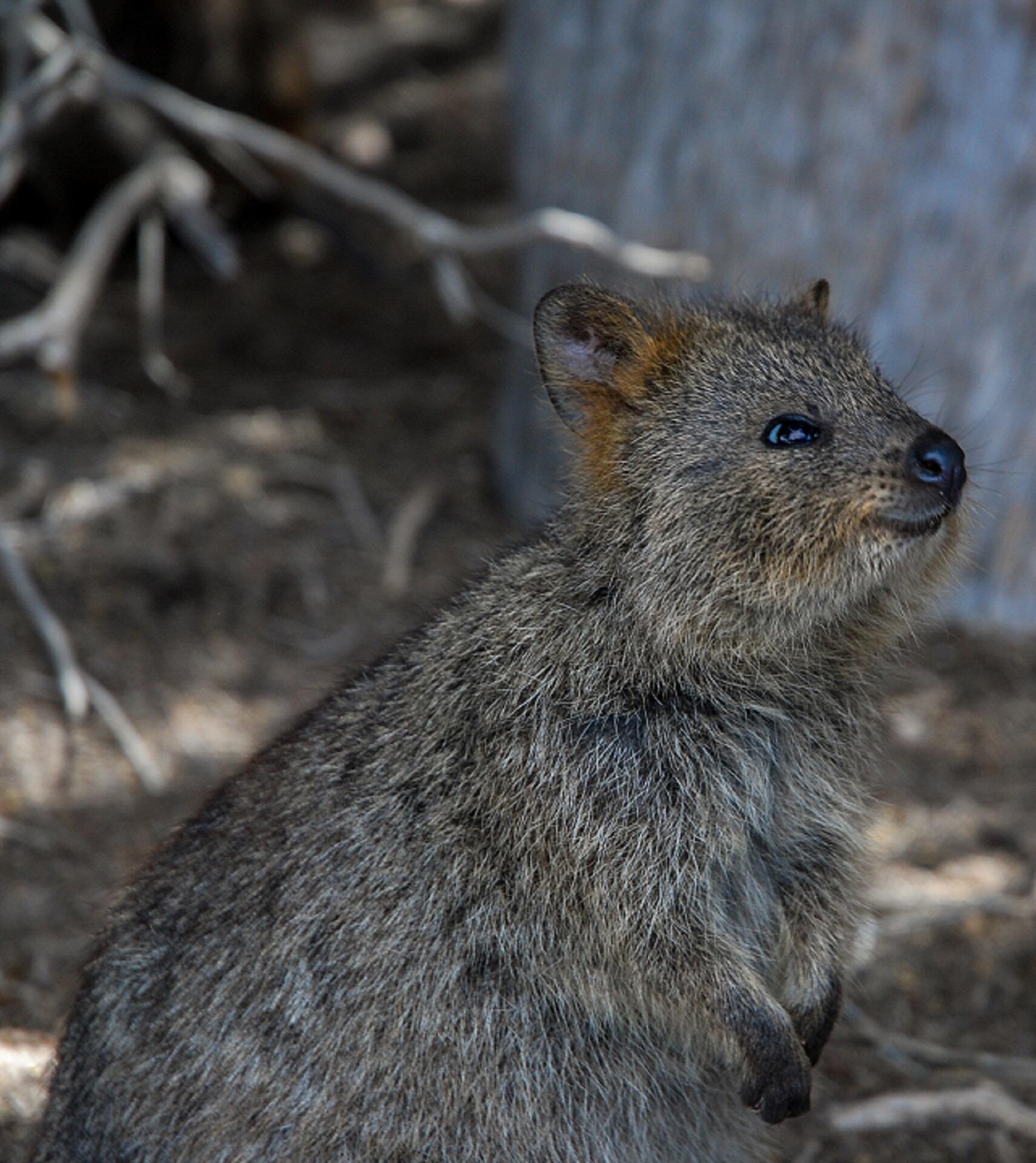
This small marsupial is the only one in its genus (one taxonomic rank above species). They live mainly on small islands off Western Australia's southwestern coast, though some live on the mainland. You can see them at the protected Two Peoples Bay Area Reserve.
Quokkas are just a bit bigger than a standard house cat, but far smaller than most marsupials. It's stocky, with strong back legs and a broad head. It has coarse fur, and it can climb shrubs and trees.
Dutch explorer Willem de Vlamingh was the first to catalogue the quokka, in 1696. He mistook them for huge rats, so he named the island accordingly (t Eylandt 't Rottenest, in Dutch).
Just like viewing distinct animal populations of Tasmania, enthusiasts must travel offshore to spot these marsupials. Today, Rottnest Island is one of the best places to spot them, as well as the above-mentioned Reserve. Keep in mind that they are nocturnal, so daytime sightings aren't likely.
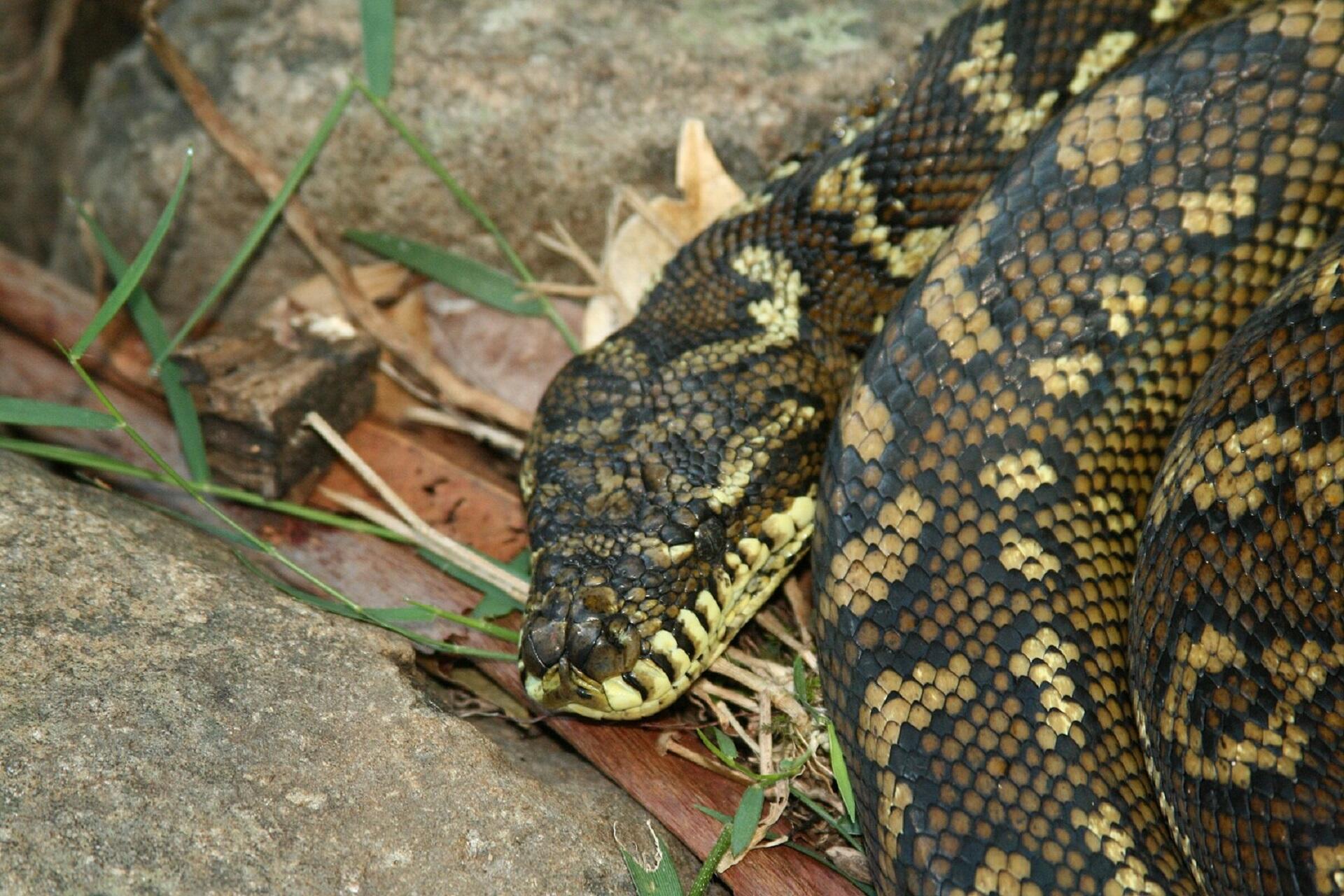
Pythons
These reptiles are endemic across Australia, and throughout Southwest Asia. That doesn't always mean they are not native to a region. The carpet python is endemic (native) to Western Australia, and it sometimes causes grave problems.
One conservation effort backfired when carpet pythons began entering potoroo enclosures.
Conservationists abandoned that location, returning the marsupials to their original home.
Western Australia's arid climate and relative emptiness makes it a favourite for several types of pythons. Among them, we list:
- the black-headed python
- the children's python
- the olive python
- Stimson's python
They eat small mammals, lizards and birds, constricting their prey before swallowing it. They tend to live long lives, especially as pets - with proper care, of course. They must have a big enough enclosure, kept moderately warm-to-hot, and have regular feedings, and a variety of foods.
Greater Bilby
This marsupial roams around the middle to northern parts of Western Australia, from the coastal regions to far inland. It leaves its burrow to feed at night, dining on fruit, insects, and fungi.
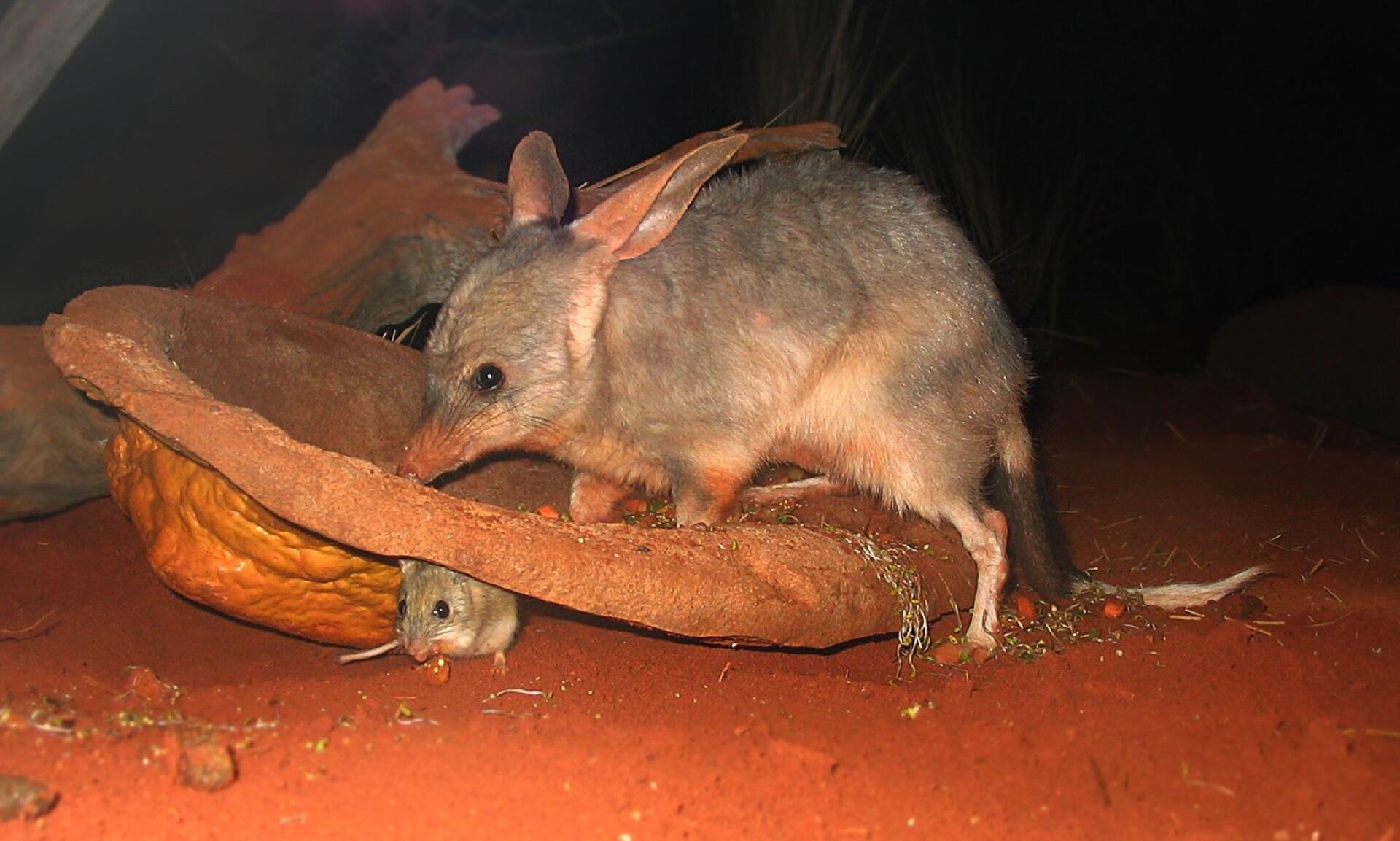
This bilby's 'greatness' was to set it apart from the 'lesser' bilby, which went extinct in the 1950s. Today, most people simply call this marsupial the bilby. In fact, it has many names, including pinky, and rabbit-eared bandicoot
Regardless of name, this small animal is under constant threat: from disease, habitat loss, and introduced predators. Once a thriving species, it now prefers arid regions where it can build spiral burrows that keep foxes and other hunters out. It needs no water, as it gets needed moisture from their food.
Perentie
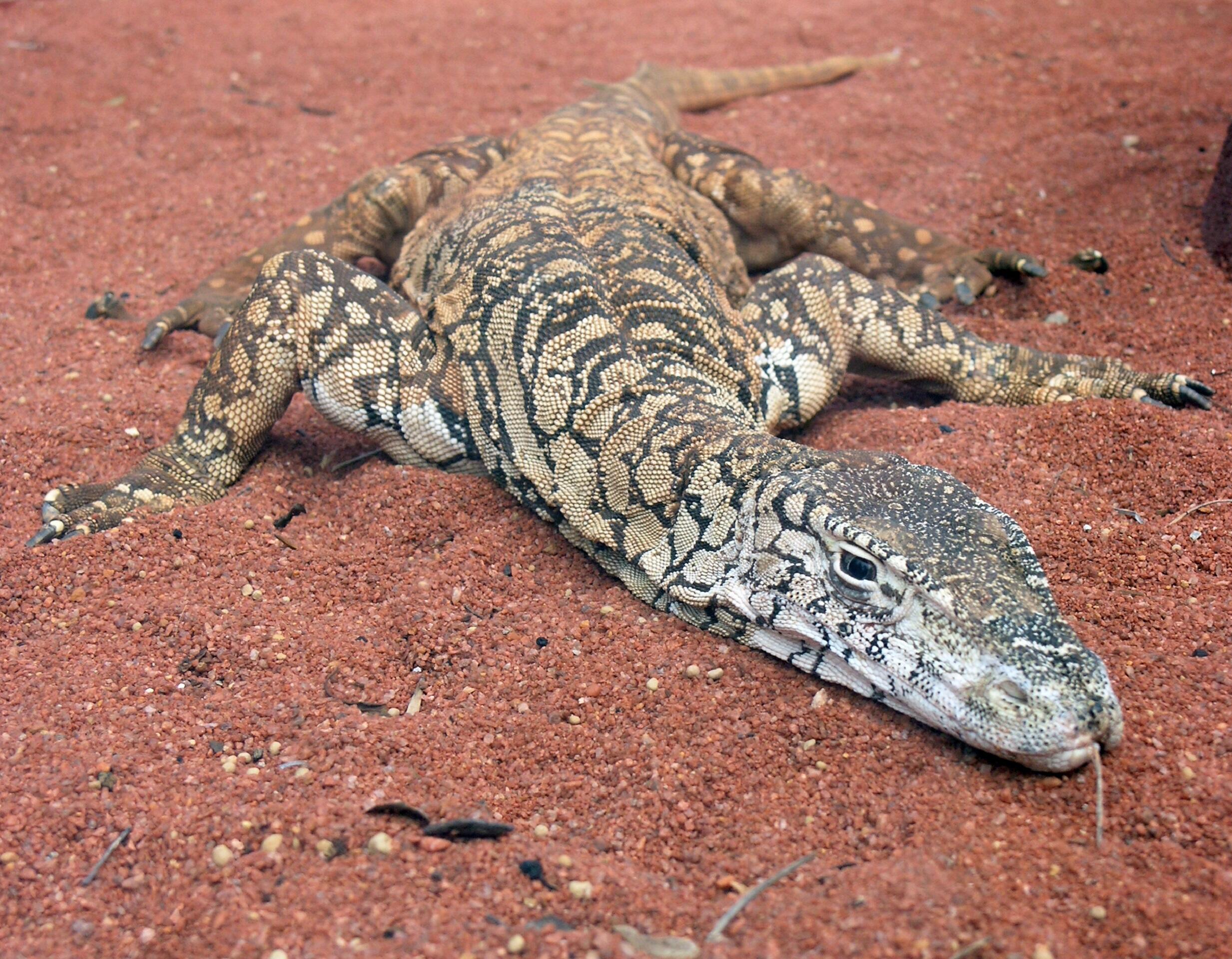
This is one of the largest lizards in the world, and the largest of such animals in Australia. They live across the middle of Western Australia, and their habitat stretches into Queensland. They look a bit frightful, but are very shy.
Besides, they prefer remote, relatively uninhabited territory, so you're not likely to encounter one unless you visit a zoo.
The perentie is very important in Aboriginal cultures.
It serves as a totem, and was once part of ceremonies.
The lizards' cautious nature leads them to avoid human contact. They're skilled at digging, so they can create a burrow within just a few minutes. If they are cornered, they take one of three courses of action:
Freeze
lie flat and motionless
Run
if it senses it can outrun the danger
Fight
using sharp claws and teeth, and whipping its tail.
These lizards are apex predators, at the top of their food chain. They eat small mammals and reptiles, and the birds they can catch. They prefer live prey, but they also eat carrion.
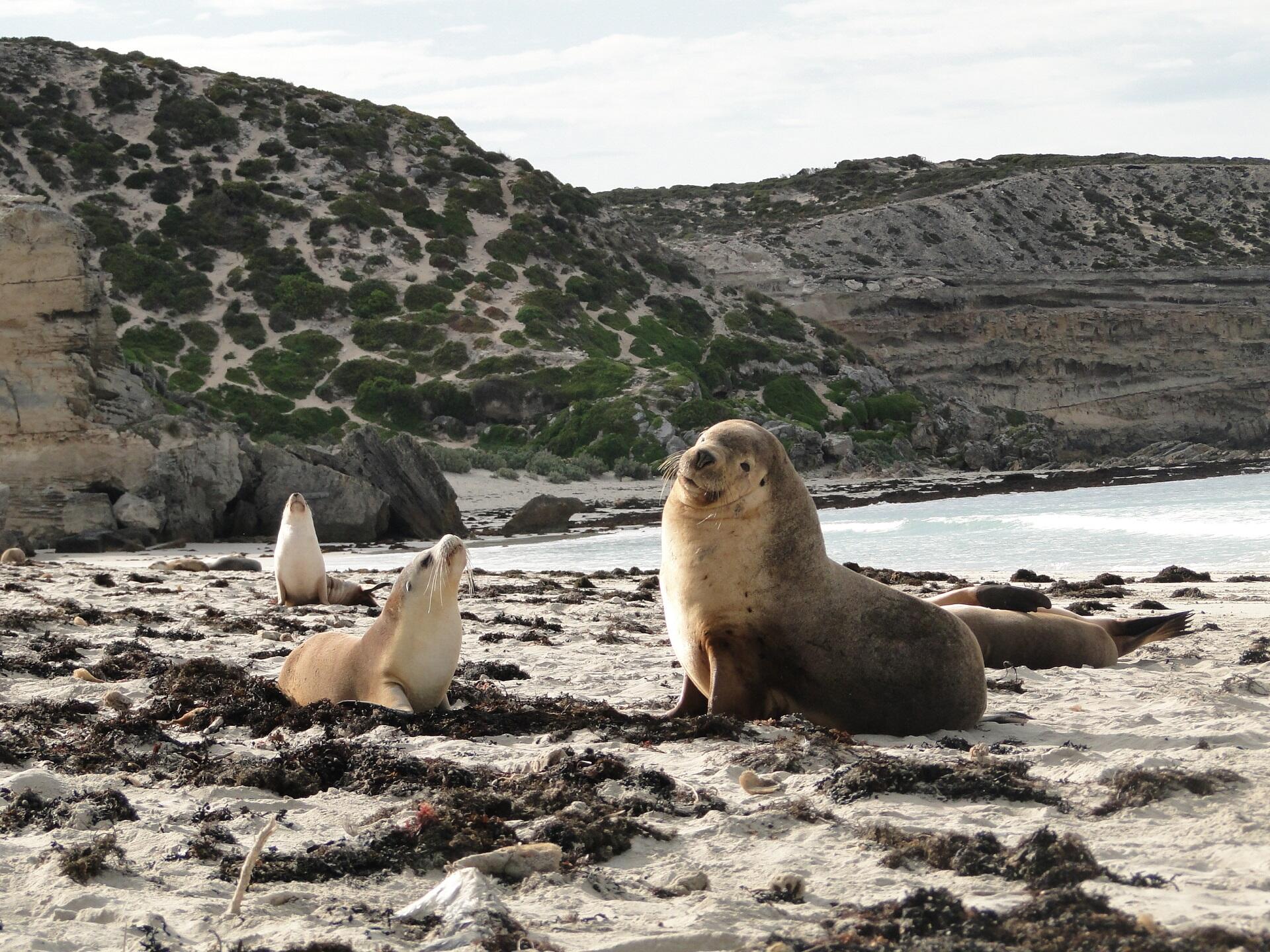
Australian Sea Lion
These endangered pinnipeds (seals) are endemic to Australia. You won't see these animals in NSW - at least, not in the wild. Its range extends from Western Australia's coasts, to South Australia. They like to live spread apart, and their numbers are relatively low. They are currently on the endangered list.
These animals are most remarkable for their unusual breeding cycle.
They alternate between a 5-month seasonal period, and a 17-18 month off-season breeding time.
Despite their relatively generous size, these seals fall prey to sharks, orcas and stingrays. Curious seal pups may find the blue-ringed octopus worth investigating, an often deadly mistake. That is among the most poisonous octopi. These and other hazards are causing the population's decline.
Thorny Devil
This creature looks like the stuff of nightmares. With its tail curved scorpion-style, it stalks its territory, looking for prey. But it's all about appearances. It's not a big lizard, its thorns protect it from predators, and it is neither vicious nor venomous.
These devils survive on a diet of ants. It thrives in dry, arid climates thanks to its carefully constructed spinal channels. Its body forms a series of capillaries, which deliver the night's dew from its skin into its mouth.
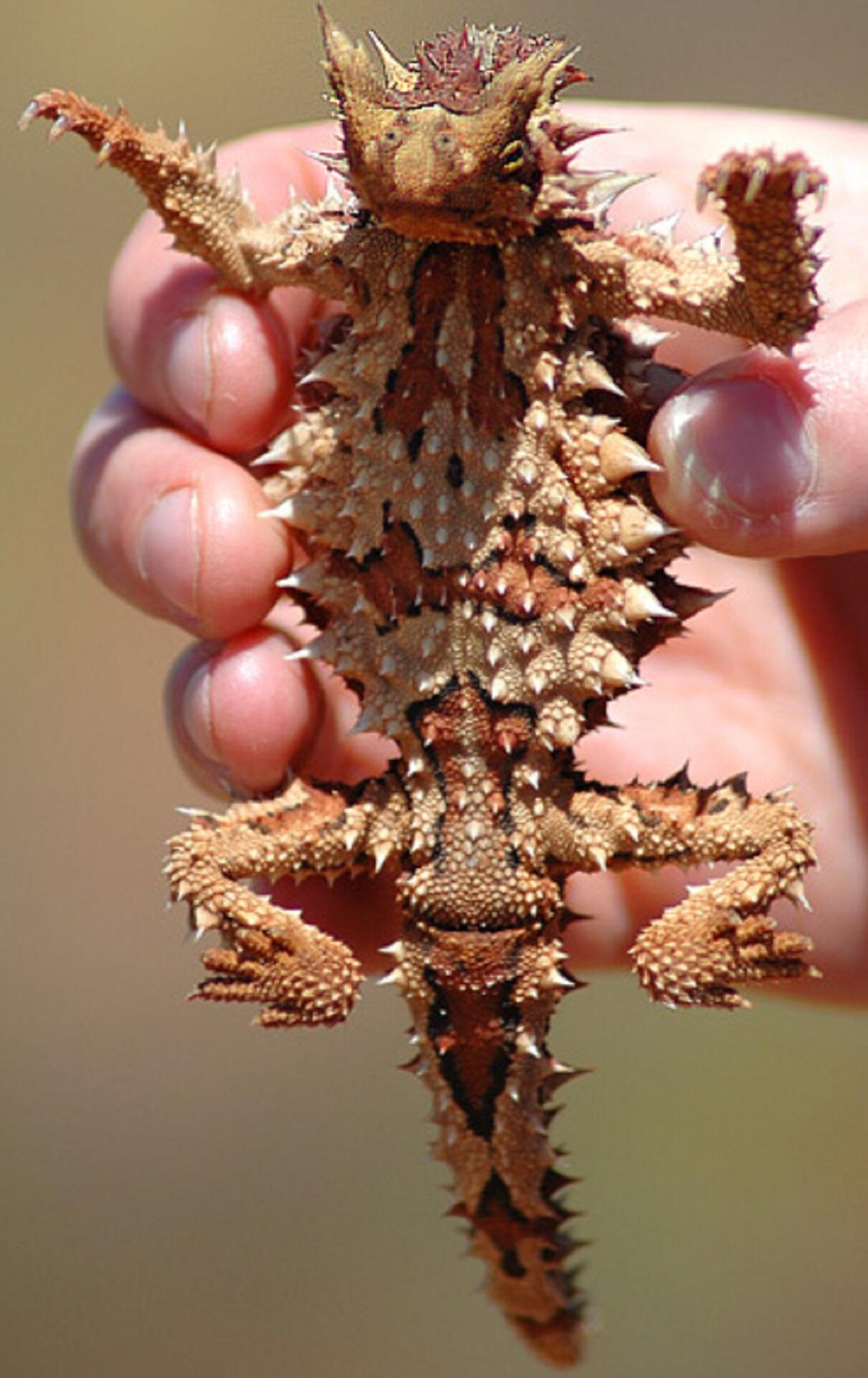
Despite its protective spines, these devils are prey, mainly to other lizards, and some birds. Its normal lifespan stretches 10-15 years, about as long as some of the animals calling Victoria home do.

